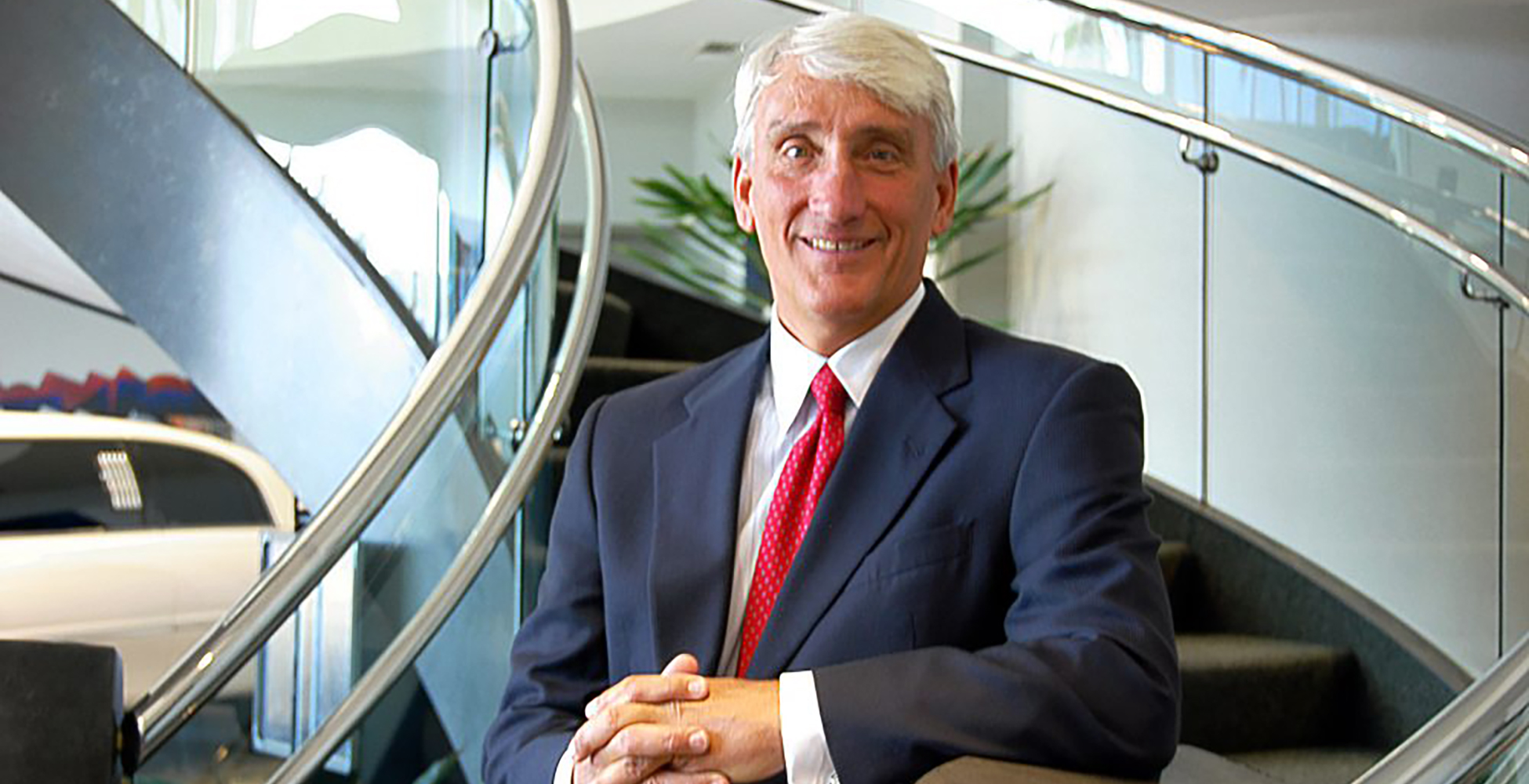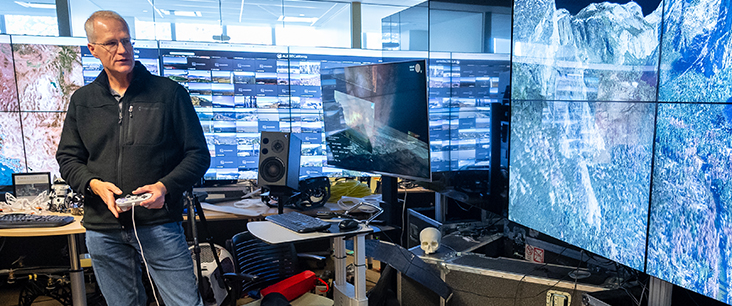Fail Fast and Pivot: How the QI Innovation Space Helped One Entrepreneur Chart a Promising Path

When Alan Lerchbacker has an idea, he goes all in, and that was true for the launch of his company, Drone Squadron, in 2021.
Lerchbacker had spent his career in the maritime field. He studied at the U.S. Naval Academy, earning both a B.S. and master’s in engineering, and spent 26 years with the U.S. Navy in posts including Virginia, Italy, Guam, Hawaii and Japan. After the Navy, he earned an executive MBA from Claremont Graduate University, and his positions included assistant chief operating officer for the Metropolitan Water District of Southern California and CEO of five different companies. One of these was Austal, a firm that built a shipyard in Alabama and grew from 66 to 1200 employees under Lerchbacker’s watch.
When Lerchbacker learned about a patent that might help detect water leaks, he sensed a huge opportunity.
“I understand the California water situation pretty well,” he said. “If we can use technology to identify leaks aerially, we’d be able to really change how we chase water in in California.”
The idea behind Drone Squadron was to harness technology such as artificial intelligence and machine learning with satellite data and more 100 drones patrolling more than 5,000 square miles of California’s waterways. In so doing, the company would measure water loss along the entire state of California’s water system, opening numerous possibilities to improve efficiency and save water.
As a place to get the company off the ground, the Qualcomm Institute (QI) Innovation Space on the UC San Diego campus stood out.
“The synergies among the incubator, School of Business and the School of Engineering—as well as all the professors—are outstanding,” he said. “What a great combination!”

After he established a presence in the QI Innovation Space on the second floor of Atkinson Hall, he realized the intellectual environment was even more ideal than he had hoped. Researchers with the Cultural Heritage Engineering Initiative (CHEI) and ALERTCalifornia—which both used state-of-the-art drone and imaging technology—were located directly across the hall.
“It was like Google,” Lerchbacker said. “I could just walk next door to talk to people who understood the technology because they were using it to detect wildfires [and capture archaeological data].”
Over the following months, Lerchbacker added to his team and continued to explore his core value proposition, conversing with his QI colleagues and other experts as part of his investigation. Disappointingly, he came to the conclusion that Drone Squadron was ahead of its time—the technology had not yet advanced enough to perform as hoped.
“The telescope technology, satellite technology, camera technology are all very confused by water,” he said. “And it can only penetrate about two feet—we really need it to go a lot deeper than that. I bet it’s 20 years until we see cameras that can do what we needed them to do.”

Instead of giving up, Lerchbacker and his team decided to pivot. A chance interaction with a friend suggested another way they might bring advanced technology to make an impact on the marine space—buying and modernizing shipyards.
“Some of these shipyards still use paper and a pen [as warehousing tools],” he said. “It’s been 50 years since somebody actually improved the technology and the way we build ships. And when we started to talk to companies, many owners wanted sell because they’re 60-plus years old and their kids don’t want to continue the business.”
Under the auspices of Lerchbacker’s consulting firm, F&A International, and supported with private family funding, the team has started to purchase shipyards and is evaluating the purchase of dozens of others.
Lerchbacker is enthusiastic about the future, and grateful to QI for having been part of his entrepreneurial journey.
“[QI Innovation Space] was wonderful,” he said. “It’s a really great program, and it’s just going to get better now that people are starting to come back after the pandemic.”
For more information about the QI Innovation Space, see qiis.ucsd.edu.